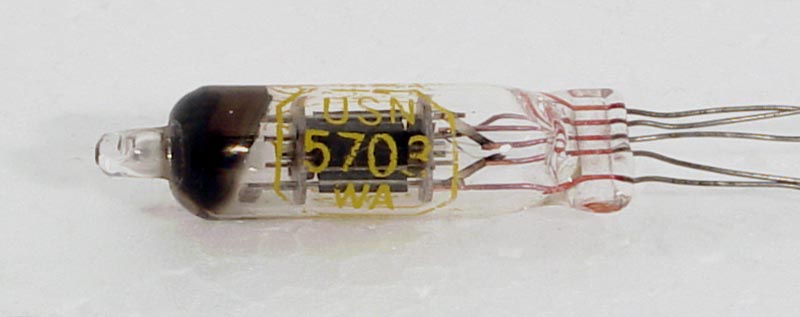|

Subminiature valves roughly 7 x 9 x 30 mm and with flying leads were used in vast quantities during WWII as the active components of proximity fuses. Proximity fuses were fitted to anti-aircraft shells, and to many types of bomb, and relied on a very crude form of radar to trigger the explosion of the shell or bomb as it approached a target rather than waiting for the actual impact. With aircraft targets this meant that near misses exploded even if they did not quite score a direct hit.
In some circuits, the presence of metal close to an oscillator caused a change in frequency, much like a modern metal detector, and this shift was detected to detonate the bomb.
The explosion threw schrapnel into the path of the target and would often cause enough damage to bring it down. Even more important, it made enemy bomber pilots wary of flying low enough to aim their bombs accurately. When applied to falling bombs, the proximity fuse caused a bomb to explode immediately before striking the ground, so that its blast and schrapnel could cause maximum damage. Bearing in mind that it took a millisecond or so to trigger the explosion a bomb which exploded only on impact would typically have its blast muffled by a couple of feet of soft earth.
For proximity fuses the valves were switched on on firing and the cathode reached operating temperature within about a second. This gave a very quick heat time, but critically armed the weapon after clearing the firing point. One advantage of the very small size and weight is robustness to vibration and shock. Such a small valve would get very hot but it might not be required to operate for more than a few seconds.
The main peaceful use of the subminiature valve technology was initially for hearing aid amplifiers. Type 505AX is an example. Here the need was for low comsumption heaters. Hivac made a range of subminiature valves such as the XFW10 and XFY10 for this use.
In the 1960s subminiature VHF triodes called Nuvistors were developed in the USA. The 6CW4 was one of the most popular. It was extensively used by radio amateurs for the front end of VHF receivers of the period. In addition to radio use, these VHF devices found instrumentation uses in high quality wide bandwidth oscilloscopes from companies such as Tektronix.
|